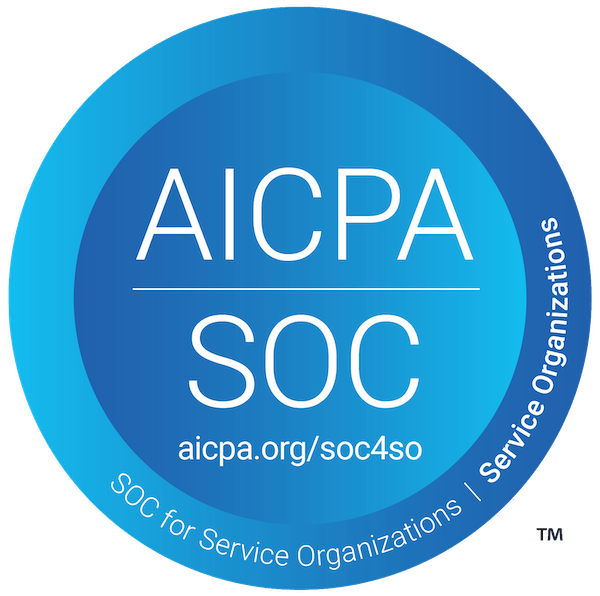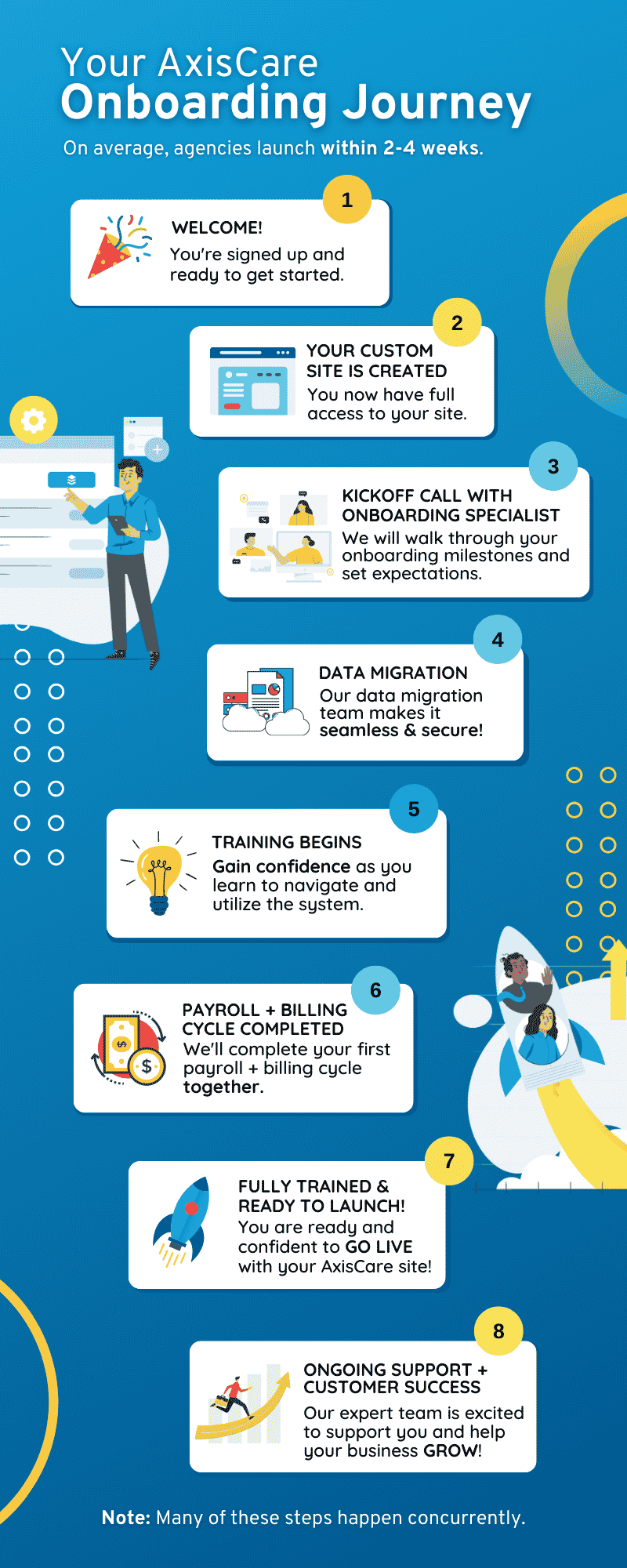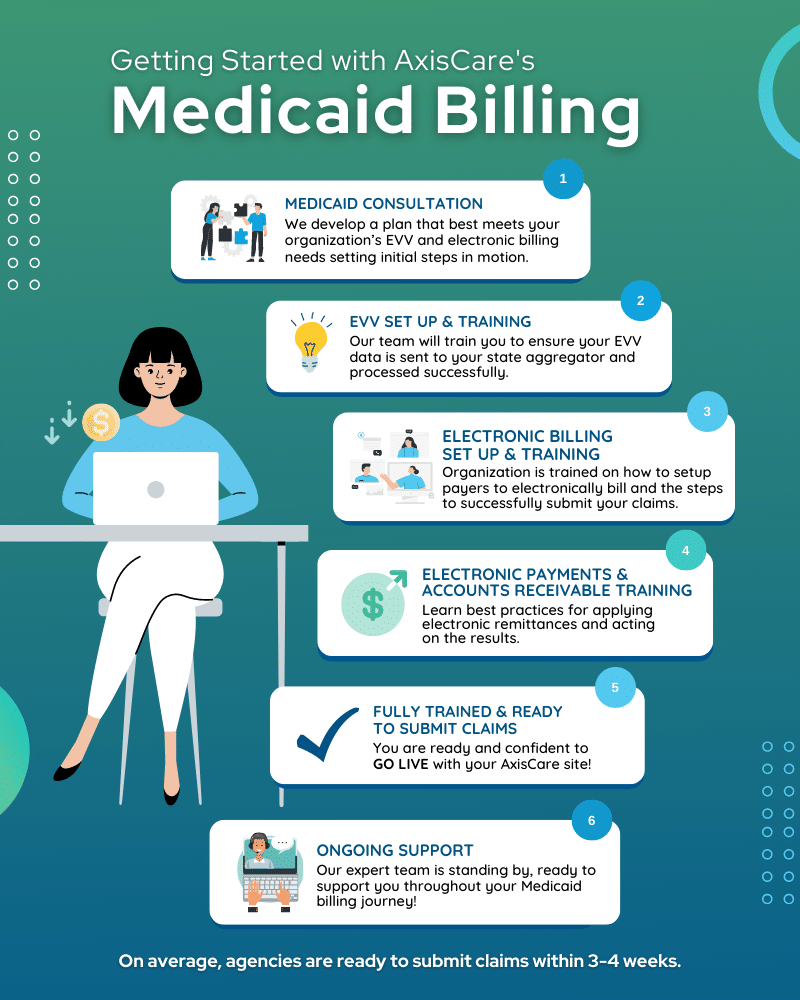Tip Sheet: The Importance of Person-Centered Plans for IDD
The Importance of Person-Centered Plans (PCP) for IDD
While many service providers support aging populations, organizations that serve individuals with intellectual and developmental disabilities (IDD) play a critical role in helping people lead fulfilling, independent lives. For those receiving IDD services, having a person-centered plan is essential – it ensures that supports are tailored to the individual’s unique goals, preferences, and needs.
Historically, these plans may have followed a top-down clinical model: assess the client, diagnose the issue, and prescribe treatment. Today, the focus has shifted to a whole-person approach prioritizing choice, dignity, and self-determination. When individuals with IDD are seen, heard, and given space to shape their lives, they’re more empowered to thrive.
What is PCP?
Person-centered planning (PCP) is a collaborative framework that considers someone’s entire life situation, not just their diagnosis or limitations. PCPs are also informed by their unique strengths, preferences, cultural sensibilities, and comfort zones, helping them live even more self-directed, fulfilling lives.
To incorporate these elements, a PCP involves the individual at the beginning of the creation process, often with help from their family or other professionals. In doing so, this approach empowers individuals with IDD to take charge of decisions about where they live, how they spend their time, and the support they receive.
Preserving autonomy and dignity should always be the guiding principle behind IDD care, and a PCP is the key to ensuring individuals and their support systems stay focused on what they can achieve and control, as opposed to what they can’t do.
Key Components of a Person-Centered Plan
A person-centered plan isn’t a one-and-done document. It’s a dynamic strategy that reflects the individual’s evolving values, choices, and support needs. Here’s what a well-structured person-centered plan might look like.
Part 1: Setting Goals
PCP planning is centered around identifying what matters most to the individual. This includes their short- and long-term vision for their living situation, education, job, social life, and overall personal development. The goals that inform a person’s plan should be clearly defined, achievable, measurable, and flexible enough to evolve.
Part 2: Defining Communication Protocols
Individuals with IDD may communicate in various ways. To support their self-expression, Direct Support Professionals (DSPs) must adapt to each person’s preferred communication methods. This may include using visual supports, assistive technology, simplified language, or offering services in the person’s primary language. It’s also important to include sensory or processing needs accommodations to create environments where individuals feel understood and respected.
Part 3: Creating Routines
Consistency and predictability can help people with IDD feel secure and empowered in their daily lives. A person-centered plan should make time for recurring tasks and events like meals, social activities, quiet time, and personal care like bathing and grooming. While schedules can be flexible, limiting unexpected changes is a great way to promote comfort, reduce stress, and support autonomy.
Part 4: Tracking Success
Person-centered plans are living documents that evolve over time. Regular check-ins and updates are essential for tracking progress towards the individual’s goals, preferences, and changing needs. Ongoing collaboration helps ensure the plan reflects the person’s vision for their life and continues to promote meaningful outcomes.
Benefits of a PCP for Individuals With IDD
Person-centered plans benefit anyone receiving support services, but they are especially impactful for individuals with IDD. PCPs build a trust bridge between the individual and their support team, creating a compassionate framework that prioritizes autonomy and self-determination.
Individuals with IDD may have strong preferences about how they spend their time, including activities they enjoy and those they prefer to avoid. While these details may seem small, honoring them is critical in promoting comfort, safety, and control.
Rather than fitting people into predefined programs, person-centered planning asks: What brings this person joy? Who do they want to spend time with? How do they want to spend their time? This approach helps individuals engage in meaningful experiences, build affirming relationships, and participate in inclusive spaces where they feel seen and valued.
The Role of Families and Support Teams in PCP
Supporting an individual with intellectual and developmental disabilities takes a coordinated effort.. In addition to direct support professionals, families and extended support networks play a vital role in helping individuals achieve their goals and live meaningful lives. All these partners must work with shared respect and purpose to bring the individual’s goals to life.
Family members bring a deeper understanding of the person’s history, values, preferences, and communication style. Their knowledge helps them advocate for their loved ones and ensures the proposed person-centered plan is tailored, practical, and aligned with what matters to the individual.
The extended support teams may include case managers, educators, therapists, and healthcare providers, who can guide plan implementation and alignment to ensure the individual’s needs are met consistently across environments.
DSPs, families, and support teams work to create a strong foundation that helps individuals with IDD thrive.
Leveraging Technology in PCP
Technology can be powerful in supporting person-centered planning, simplifying the creation, documentation, and follow-up process. These platforms enable support staff to log updates after every visit, creating a comprehensive log that tracks their goals and progress over time. The right platform can serve as a collaborative hub where everyone can stay informed and aligned.
Features like automatic reminders for plan reviews help ensure timely check-ins, while built-in templates can also help maintain reporting consistency and compliance across documentation.
Digital tools can also facilitate communication, providing a centralized location for support teams to stay updated and monitor progress. Some software even includes the option to attach multimedia files like photos, videos, or recorded messages, which can bridge significant communication barriers for specific individuals.
Overcoming Challenges in PCP
Delivering personalized support requires significant resources from agencies serving individuals with IDD. With long waitlists and staff shortages, personalized care becomes critical and challenging for agencies. As mentioned earlier, technology can help ease these pain points by automating and simplifying many routine tasks that typically require much manual work.
Some staff may feel uncertain or hesitant if your organization is shifting from more traditional care protocols to a person-centered planning approach. It’s understandable why a transition at this scale might seem daunting, so the key to a successful rollout lies in a nuanced, multi-step process.
Reassure your team that the shift will happen gradually, and with the proper training and support they will need. It can help to clearly outline the benefits of PCP, such as stronger relationships with the individuals they support and more streamlined workflows following the implementation of this new approach.
Streamline Your PCP With AxisCare
Person-centered planning is a practical framework tailored to support individuals with IDD in pursuing autonomy, self-direction, and fulfilling lives. To learn more about how AxisCare can help you create or improve your person-centered planning, request a free demo with our team!







